On a fine day, the Eluanbi Lighthouse is a peaceful place. A few tourists stroll into the compound with low, white-painted buildings and the lighthouse that’s a classic round tower with high balcony, and also painted white. It’s in a serene, gently rolling landscape of grassy areas and woodland, on a headland in Kenting National Park, at the southernmost tip of Taiwan.
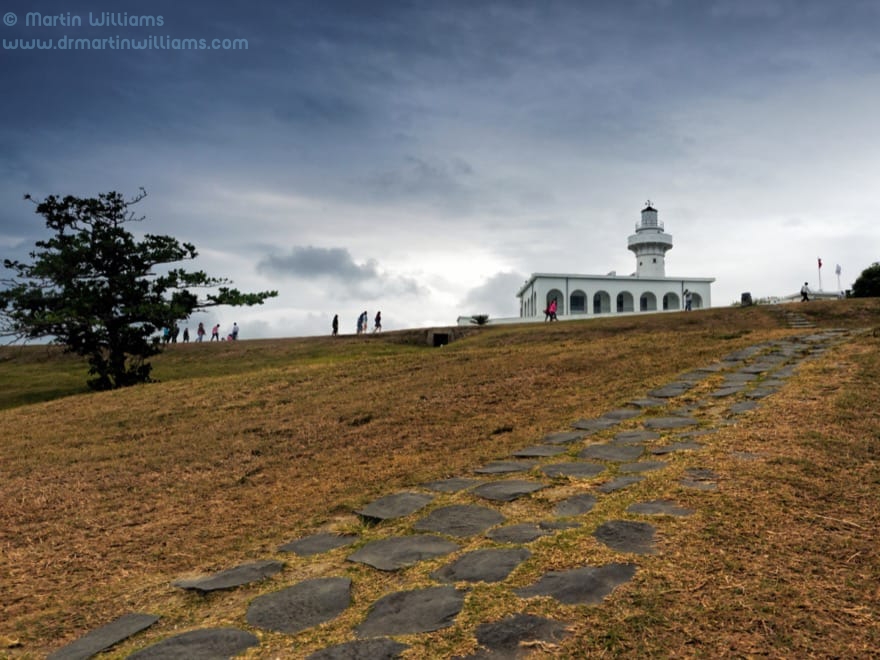
Yet the tranquillity belies this area’s violent past. Unsurprisingly, the lighthouse was built after shipwrecks caused by rough weather and submerged reefs. Among the most infamous of these was the grounding of the US merchant ship Rover, on 13 March 1867. Though the captain, his wife and 12 crew came ashore they were, as the blog Talented Outrageputs it, “set upon, murdered, and eaten by the local aborigines” – with only a Chinese sailor escaping.
The aborigines were aggrieved by the arrivals of outsiders, who could also prove murderous, and the lighthouse was built in the 1880s, it included fortifications. An information board notes it was “a unique armed lighthouse in the world”, and the wall still has holes for guns, along with a moat just outside it.
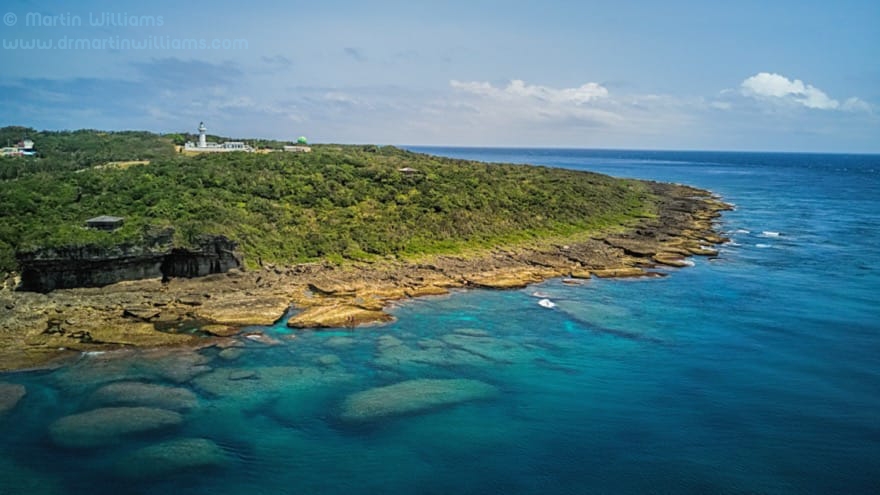
I follow a path to a coastal viewing platforms. The shore is a platform of coral reef that’s been raised above the high tideline, its surface so rough that it’s tough to walk across, to reach shallow waters where new corals grow. Taiwan lies at an active junction of crustal plates, and earlier upheavals have pushed reefs up to form a low plateau nearby, along with hills rising to the north.
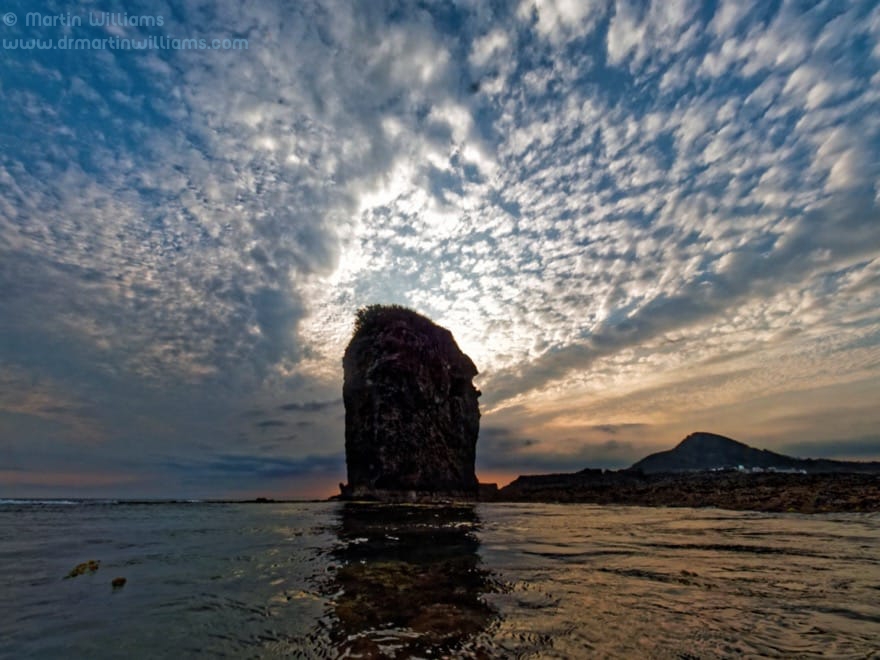
Kenting National Forest Recreation Area
I’m visiting Kenting with my wife and son, and we find cycling makes a pleasant way to explore along coast roads, passing villages and coves with sandy beaches, but more challenging when we head for the interior, with some lengthy uphill stretches. Here, we switch to walking, and explore the Kenting National Forest Recreation Area, which is Taiwan’s only tropical botanical garden.
Though I expected tropical lushness, the forest is relatively sparse; even a “giant” tree would be overshadowed by many a Hong Kong banyan. Foot-long lizards with yellow flashes on their sides linger by the paths, a family of Formosan Macaques feeds in a fig tree bearing round yellow fruits.
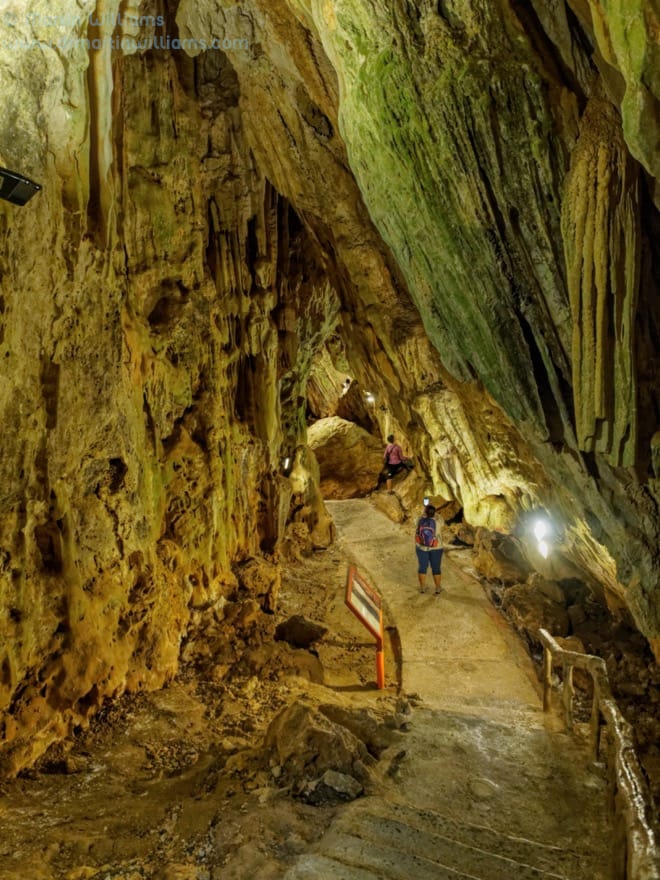
There are caves here, including the 137-metre Fairy Cave, which we walk through along a footpath with overhead lighting. While grand caverns are likened to cathedrals, a church might be more apt for even the largest part of Fairy Cave. Calcite deposited by water has formed small, rounded stalactites, and a coating on the walls like the inside of an oyster shell.
We’re staying in Kenting Street, a seaside village that’s quiet by day, but really comes to life in the evenings. There are restaurants, bars, stores with swimming and surfing gear, and as sunset approaches a multitude of stalls are set out, ready for the night market to begin.
Quickly, the main street is transformed, lined with an array of minivans, car trailers and hand-pushed carts that make Hong Kong’s venture with food trucks seem pitiful. Most sell foods including sausages, prawns, barbecued meat, pizzas, donuts, eclairs with eclectic choice of fillings.

There’s saucy seaside humour, with models of anatomically incorrect banana people promoting pancakes. A shirtless young guy in a cowboy hat touts leather belts, just down the road from a buxom lady serving milk teas. Throngs of people appear, and file along both sides of the street, snacking, chatting, enjoying the kind of evening the fun police make impossible in Hong Kong.
Far-flung Lanyu Island
A birdwatching friend in Taiwan, Richard Foster, has noted that the summer ferry to Lanyu Island will be running and – curious to see a new place – we take the 2.5-hour journey east to this far-flung island. As soon as we disembark, it’s clear we’re not in Kenting anymore: there’s no one waiting to offer transport, accommodation, or anything at all.
I find the nearby coastguard office doubles as tourist information centre, and a coastguard kindly calls the owner of a homestay, who soon arrives to take us to her home, which has a handful of rooms for visitors. There’s no public transport here, and our landlady takes us to a friend of hers, up an alley in the closest village, where we rent three bicycles.
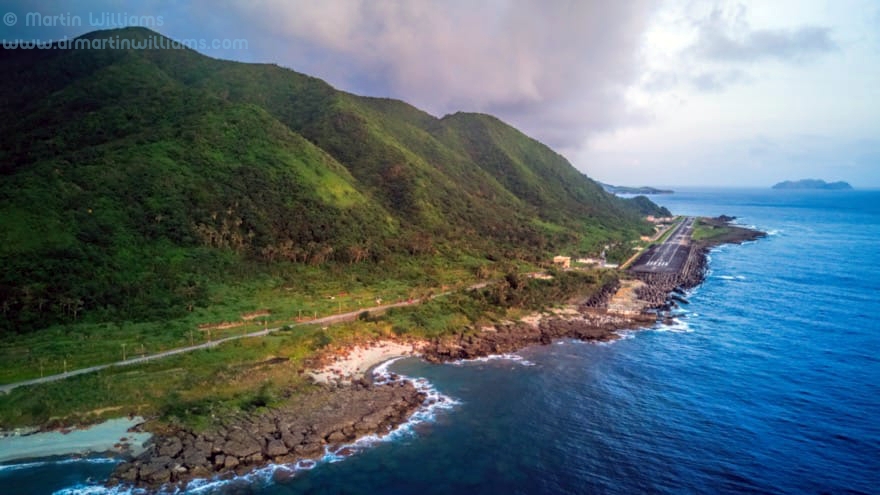
Now we’re mobile, and can look around – though the landlady cautions, “Lanyu is big – it’s 37km around the island.” Such a short distance by outside world standards, yet perhaps to Lanyu natives, this is their world, with its hilly interior and narrow coastal zones, bounded by the expansive sea.
Lanyu is volcanic, and with lush green hillsides it’s surely like a Hawaiian island; indeed, the Yami people here are closer to Polynesians than mainland Chinese. We ride south along the coast road, which takes us past a craggy headland, alongside a slender airstrip, and through a couple more villages. While tourism is a significant source of income here, there are only few cafes and places to stay – perhaps mainly serving groups of Taiwanese who are happy to tour on motor scooters, along with divers drawn by clear waters abounding with marine life.
The next morning, I’m up early to cycle to the best birdwatching spot on the island – a ravine with steamy jungle, where I hear birds but mostly don’t see them. Just to the south, I turn onto a headland, following a path to a vantage atop cliffs that have been naturally sculpted to create sea arches and structures with names like Old Man Rock.

Returning to a village, I stop to photograph a cluster of traditional wooden canoes on a beach. They’re mainly gleaming white, with keels bright red, along with intricate black patterning. To me, they look barely adequate for fishing trips, yet Polynesians may have used similar boats to colonise Lanyu and other islands that dot the Pacific.
Soon, it’s time for us to leave, by one of the high speed ferries that are nowadays Lanyu’s main connections to the outside world.
Getting there
Transport to Kenting National Park includes express buses from Zuoying station in Kaohsiung.
Lanyu is served by ferries from Kenting Houbihu, and by ferries and flights (19-seater planes) from Taitung.
